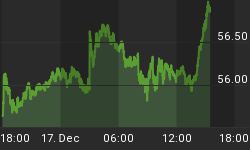Last week, we kicked off the series by examining the 14-week cycle tops which projected a top on or about May 24, 2011. This week, we'll investigate a natural cycle which, as I discovered, is reproducing itself in the stock market and projects a top on June 13, 2011.
Please consider the following two charts:


To summarize the color-coded lines:
| Color | Chart 1 Date | Chart 2 Date |
| Black | October 11, 2007 | January 15, 2010 |
| Red | January 22, 2008 | April 28, 2010 |
| Blue | May 19, 2008 | August 26, 2010 |
| Green | November 20, 2008 | March 1, 2011 |
| Pink | March 9, 2009 | June 13, 2011 |
The first thing each set of lines has in common is this: they are exactly 571 trading days apart.
The second thing each set of lines has in common is they represent important turning points:
| Color | Chart 1 | Chart 2 |
| Black | Top | Top |
| Red | Bottom | Top |
| Blue | Top | Bottom |
| Green | Bottom | Top |
| Pink | Bottom | ?? |
As you can see, except for the black pair of lines, the other turning points have been opposite each other. 571 days later, bottoms become tops and tops become bottoms. If this 571 day cycle holds true, then the pink line on June 13, 2011 will be at or near an important top.
The last thing these set of lines has in common is that they all represent the Golden Ratio (1.618 to 1) when compared to the length of the 2007-09 downtrend. It took 353 trading days to fall from the October 11, 2007 peak to the March 9, 2009 trough. 571 divided by 353 is 1.618. The Golden Ratio which appears in nature seems to be reproducing itself in the stock market.
Next week, we'll examine top projections based on Money Flow Ts™. Until then, use caution in your investments and manage your risk wisely.















